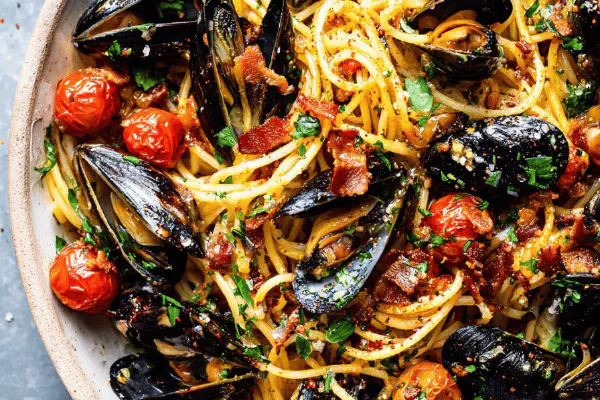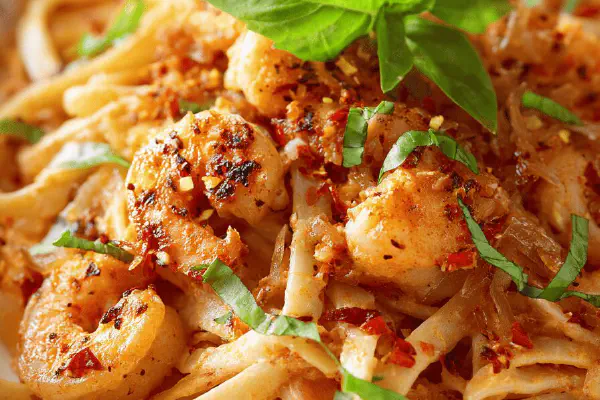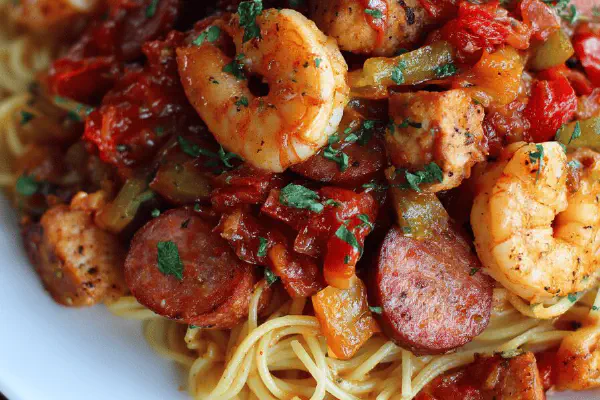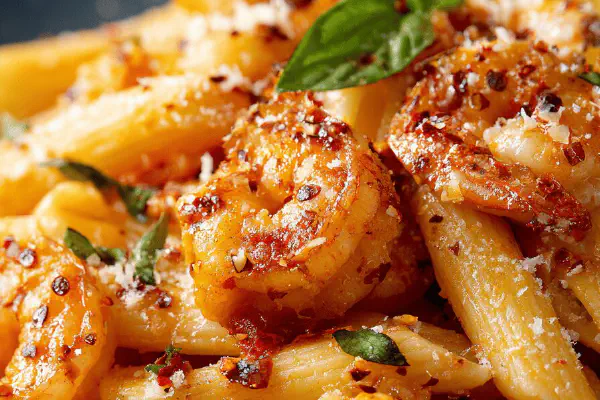Lobster Spaghetti Delight
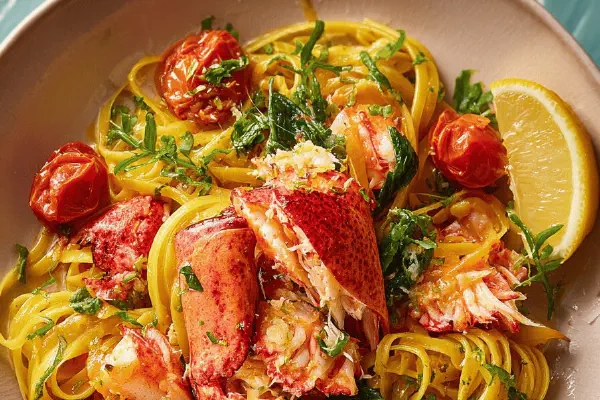
By Emma
Certified Culinary Professional
Ingredients
- 450g tagliolini pasta
- 1 whole lobster approx 700g, tail and claws removed, shells reserved
- 3 tbsp olive oil
- 5 cloves garlic, thinly sliced
- 1 tsp fennel seeds, lightly crushed
- 250g cherry tomatoes, halved
- 120ml dry white wine, preferably Sauvignon Blanc
- 300ml homemade lobster stock or fish broth
- 1 tbsp fresh thyme leaves
- 1 small shallot, finely diced
- Zest of 1 lemon
- 2 tbsp fresh flat-leaf parsley, chopped
- Salt and cracked black pepper to taste
- Optional: pinch chili flakes for heat
About the ingredients
Method
Lobster Stock
- Shells from the lobster. Smash roughly, toss into a pot with 500ml water. Low heat, gentle simmer. Scrape the pot bottom, let aroma build. About 35 minutes, skim froth. Strain, discard shells. Stock should smell like deep ocean, not fishy. Set aside.
Pasta Prep
- Boil water, heavily salted, it must taste like seawater. Tagliolini cooks fast, no more than 3 mins once in. Al dente is key, no mushy pasta here.
Sauce Base
- Heat 2 tbsp olive oil in wide pan. Garlic and fennel seeds first, low heat. Listen to gentle sizzle, garlic softens, not browns. Throw in shallots. Stir until translucent. The mix smells mildly sweet, faint anise rising.
- Add tomatoes, sauté on mid heat. They’ll soften, skins split, juice released. Watch close, so they don't burn bitter. Splash in wine, sharp hiss. Let it bubble hard, reduce by half. Pour lobster stock. Medium heat, simmer. Evaporation thickens sauce, threads form when sauce drips from spoon.
Lobster
- Cut meat into bite-sized chunks. Add to sauce last 4 minutes. Overcooking shrinks and toughens; texture should be tender, moist. Salt, pepper adjustments now. Chili flakes if you dare; a subtle heat is nice. Turn off heat.
Combine
- Drain pasta, reserving some cooking water. Into the pan. Toss swiftly. If dry, splash pasta water to marry sauce and pasta. Olive oil rounds it all. Final herbs — parsley scattered like confetti. Lemon zest last, punch of brightness.
Serve
- Plate immediately. Lobster chunks scattered with a few whole cherry tomatoes left intact for bursts inside the mouth. Cracked black pepper finish. A squeeze of lemon wedge optional. Eat with a fork, taste sea and earth.
Cleanup Tips
- Lobster shells left? Great for stock freezing or rich sauces later. Oil splatters on stovetop? Wipe immediately with paper towel while warm, not hot, less mess.
Cooking tips
Chef's notes
- 💡 Start stock with cracked shells crushed loosely. Simmer low, no boiling frenzy. Scrape pot bottom often, smell deep sea aroma forming. Skim froth gently, clarity matters. About 35 minutes, patience pays. Too fast boiling brings bitterness. Strained stock is base. Keeps sauce layered and clean.
- 💡 Garlic thin sliced, not crushed or minced. Low heat, faint sizzle only, no color change. Along with lightly crushed fennel seeds. Watch for sweet faint anise scent. Shallots go next; translucent means just right. If brown appears, flavor shifts wrong—waste. Sweet smells signal sauce base ready for tomatoes.
- 💡 Cherry tomatoes halved release juice if cooked mid-heat. Skin cracks open, juice seeps. Too high heat? Risk bitter burnt edges spoiling sauce. Splash white wine then for sharp hiss, aromatics spike. Reduce by half so alcohol evaporates, flavors concentrate. No wine gives flat taste; sub broth plus lemon. Sauce thickens with lobster stock simmer, threads when dropped from spoon.
- 💡 Lobster must go in last 4 minutes max. Cut bite-size. Quick sauté preserves tender moisture. Overcook and protein toughens, rubbery. Salt and pepper close to end, test taste. Chili flakes optional, subtle heat blends with fennel. Turn off heat after cooking lobster to avoid drying. Timing is texture game here.
- 💡 Pasta must be al dente, no mushy softness. Salted water like seawater. Tagliolini cooks fast, 3 minutes tops. Drain saving some pasta water for sauce. Toss pasta with sauce in warm pan; starch binds. Add reserved water if dry or tight. Olive oil finishes it, smooths edges without heavy richness. Parsley and lemon zest sprinkled last off heat. These keep brightness fresh without bitterness.
Common questions
Can I skip making lobster stock?
You can use fish broth but loses essence. Stock adds deep ocean notes layered slowly. Quick broth feels flat. Frozen shells still worth simmering hours gently. Avoid fast boil or smell spoils. Stock is subtle backbone tastes signal maturity.
What if lobster unavailable?
Large shrimp or scallops work. Adjust cooking times drastically; shrimp cooks way faster so add last minute only. Texture differs. Avoid frozen lobster meat always tends rubbery once reheated. Freshness crucial. Seafood swaps alter sauce flavor slightly but still tasty.
Pasta mushy or overcooked problem?
Drain earlier, keep hot pasta tossing off heat. Al dente is key as sauce finishes cooking it. Add pasta water for glue and moisture. Avoid sit-stir too long or soggy mess develops. Faster pasta cooks equal limp texture; slow down, watch timing closely.
How to store leftovers?
Sauce and pasta separate best. Store lobster chunks safely cold. Sauce thicker next day, reheat gently adding water or olive oil. Freeze lobster stock in portions for next use. Leftover shells keep in freezer freeze batch stocks later. Reheat slow, no microwave blasts to prevent tough lobster textures.
